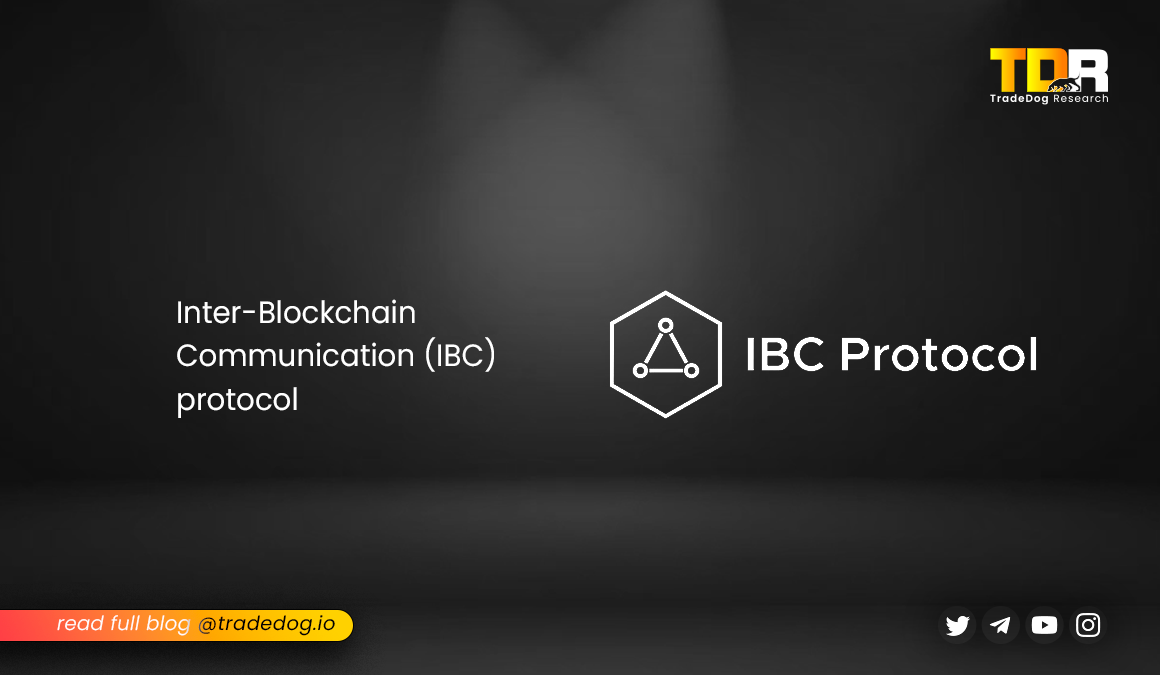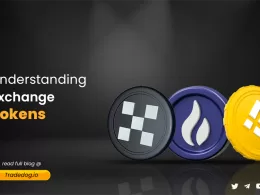Quick Links
The blockchain industry thrives on innovation, with new projects constantly emerging to address specific needs. However, isolated blockchains create limitations. The Inter-Blockchain Communication (IBC) protocol tackles this challenge by enabling seamless communication and data exchange between independent blockchains. This blog delves into IBC, exploring its functionalities, implications, and the future it holds for a more interconnected blockchain ecosystem.
What is the IBC Protocol?
Developed in 2019 by Cosmos Network, IBC is an open-source protocol facilitating message relaying between separate distributed ledgers. It fosters interoperability among blockchains, allowing them to exchange data and assets like tokens securely. This eliminates the need for isolated blockchains, promoting a more scalable and accessible blockchain environment.
The Interchain Foundation (ICF) established the Interchain Standards (ICS) to specify the functions required for IBC within the Cosmos ecosystem. IBC offers a valuable solution for various blockchain use cases, including:
- Cross-chain swaps on decentralized exchanges (DEXs)
- Application-specific blockchains where assets originate on specialized chains
- Private blockchains seeking connectivity with public or other private chains
Technical aspects of IBC
Universal Interoperability: IBC-enabled chains can exchange any data type encoded in bytes, enabling the industry’s most versatile cross-chain interactions.
Permissionless Access: IBC is entirely open-source, allowing anyone to build with it without in-protocol rent extraction or hidden fees.
Security: IBC’s light client-based interoperability eliminates the need for a trusted third party in cross-chain interactions, securing billions of dollars in annual value transfers without a single exploit since launch.
Asynchronous Communication: IBC enables sending data cross-chain and asynchronously receiving receipt confirmations, facilitating adaptable workflows utilizing multiple smart contracts and applications.
Interchain Accounts: Users can perform actions on a different chain without leaving the origin blockchain, ensuring a seamless user experience.
Interchain Queries: IBC allows reading state and verifying data from other blockchains, enabling workflows that leverage information from the broader network.
Token Transfers: Fungible tokens and NFTs can be sent and received cross-chain without relying on third-party trust assumptions.
How Does IBC Work?
IBC operates on a two-layered architecture:
TAO (Transport, Authentication, and Ordering) Layer: This foundational layer acts as the secure backbone. It establishes connections between blockchains and verifies the data being exchanged. Imagine it as a secure tunnel for data packets to travel through.
APP (Application) Layer: This layer ensures different blockchains understand each other. It defines how data is formatted and packaged for seamless communication.
Within the Interchain Standard, the client ensures trustless data verification, while the relayer facilitates information transfer. These components work together to create a robust framework and seamless communication between blockchains.
Key Components
Standards: These are the core protocols that dictate how blockchains communicate with each other. They act as the common language for all participants.
Clients: These are software components that verify the data being sent is accurate and hasn’t been tampered with. They ensure trustless communication by independently checking the data’s validity.
Relayers: These act as message carriers, transporting data packets between hubs and zones. They efficiently route the information across the network.
Hubs and Zones: Hubs function as central routers, facilitating the relay of transactions and data between individual blockchains (zones). Zones leverage hubs to connect and communicate with other zones.
Packet Transactions: These are the data packets containing information about the sender, recipient, and the actual transaction. They encapsulate the essential details for the receiving zone to understand and process the request.
Smart Contracts: Each blockchain involved in IBC communication implements smart contracts specifically designed for IBC. These smart contracts manage the secure and orderly transfer of data packets between blockchains.
Source – Cosmos Network
The data transfer process is straightforward:
- When a user initiates a cross-chain transaction, the packet travels from the source zone to a hub.
- The hub then relays it to the destination zone.
- After processing the transaction, the destination blockchain follows the same path to deliver a response.
- The TAO layer handles the infrastructure and security aspects of transferring data packets, while the APP layer determines how the data is packaged and understood by the sending and receiving blockchains.
Benefits of IBC for Different Stakeholders
Users: They gain access to a wider variety of decentralized applications (DApps) and services across various blockchain platforms. IBC allows secure and efficient transfer of digital assets like tokens and cryptocurrencies across multiple blockchains.
Traders: They benefit from increased trading potential and improved strategies. IBC facilitates cross-chain transactions, enabling portfolio diversification, leveraging price disparities, and accessing liquidity pools across platforms. This eliminates barriers to entry and exit, promoting market efficiency and liquidity. Additionally, traders can reduce risks associated with network congestion on specific blockchains by quickly transitioning to alternate networks through IBC.
Developers: They can create innovative DApps and enhance existing ones. IBC empowers developers to build interoperable solutions that communicate with various blockchain networks. This includes cross-chain asset transfers, data exchange, and smart contract interoperability by incorporating IBC into their applications. Complex decentralized ecosystems like DEXs, gaming networks, and DeFi platforms can be built due to this interoperability. IBC also Speeds up development and lowers costs. IBC offers standardized protocols and toolkits for creating cross-chain communication channels, streamlining development, and reducing costs.
The Future of IBC
IBC’s future lies in unlocking the potential of a unified blockchain landscape. Seamless communication between blockchains paves the way for complex applications, innovative financial instruments, and interconnected ecosystems. Users will be able to freely interact across diverse networks, leveraging data and assets without compromising security or benefits. This eliminates the current choice between isolated participation or token swapping. However, technical hurdles and robust governance frameworks need to be addressed. Collaboration and standardization across blockchain projects are crucial to prevent fragmentation and ensure IBC becomes the foundation of a truly integrated crypto ecosystem.









